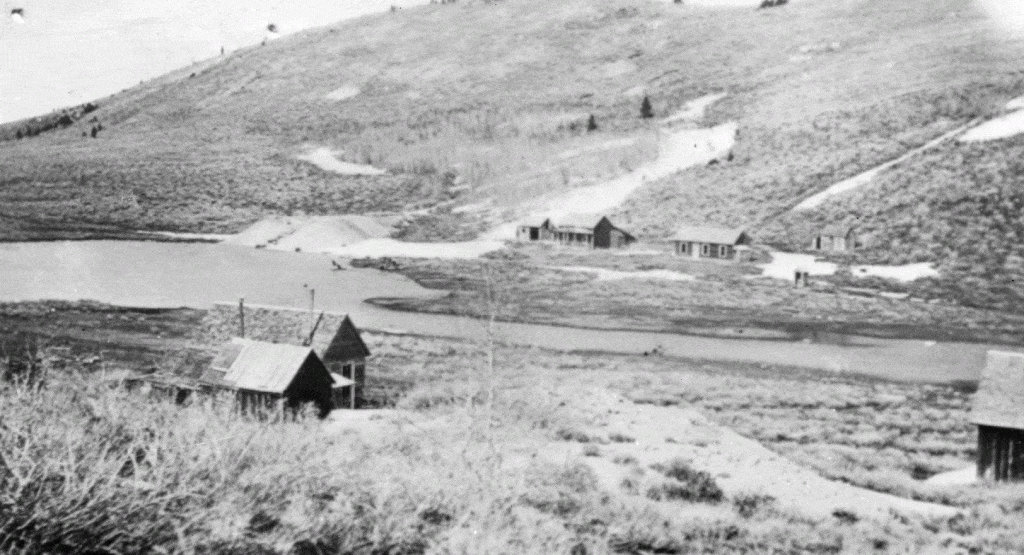The history of “upper Deer Valley” begins with Silver Lake and the area originally called “Lake Flat.” When prospectors first arrived around 1870 there was a large, shallow, “simmering” lake. The surrounding mountains were covered with almost impenetrable pine, spruce and aspen forests. These were soon clear-cut to provide fuel and construction material for the growing hamlet and surrounding mines.
The earliest mines of Park City were in the Lake Flat area and included Flagstaff, Lady of the Lake, Nail Driver, the New York, McHenry and others. Eventually Lake Flat evolved into a small town with approximately 700 residents. It was a harsh existence; winters were brutal. Of greater difficulty was the primitive infrastructure. The main road – McHenry Road – was no more than a steep and treacherous wagon path.

Credit: Park City Historical Society and Museum, Himes-Buck Digital Collection
Faint remnants of “Old” McHenry Road are visible at the cul-de-sac on Antenna Hill at the end of Rossi Hill Drive just above where the Ontario and Judge loading stations stood. In its day McHenry Road forked in a neighborhood now called Eagle Court: the right fork headed to lower Deer Valley; the left went into Park City. Exploring the trails today will lead you to some of the best panoramic views of Old Town. Look for the Judge aerial tramway towers visible to the left when facing southeast.
Another challenge facing miners and financiers of Lake Flat was that most of the early mines produced little ore and therefore little money. Though both the Nail Driver and New York generated significant amounts of waste rock, the area was considered minor in the larger Park City District.
Discovery of more significant ore deposits below Lake Flat and ensuing development of the Ontario, Judge and Daly West mines signaled the beginning of the end for the scrappy community. By the late 1890s all that remained was a collection of abandoned buildings and mines. The lake, too, was gone, drained by the Ontario #2 drain tunnel completed in 1894.
Free from human interference, the forest began to regenerate. By the early 1960s, the mountains were again densely covered. The area was isolated and almost forgotten, occasionally visited only by local Boy Scouts and adventurous teens traversing Old McHenry Road to hunt squirrels and build huts with wood scavenged from the numerous ruins. The only resident was a lone sheep herder in the summer months. Access to the top of Bald Mountain was near impossible due to the forest and no road. This changed in 1971 when Mountain Bell made a crude road and installed microwave reflectors to improve phone service.
The area remained in slumber until the development of Deer Valley Resort. Today the topography of the original Lake Flat area is nearly unrecognizable, obliterated by the development of Silver Lake Village and supporting infrastructure. Only the lawn in front of the Royal Street Cafe provides a clue that there was once a lake in upper Deer Valley.
Future articles will explore the history of “lower” Deer Valley.